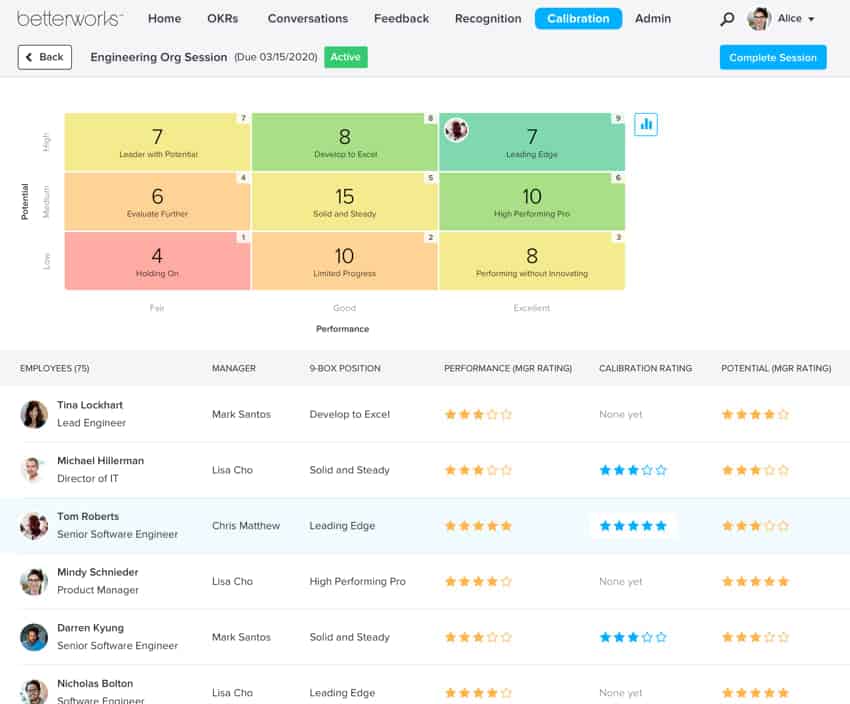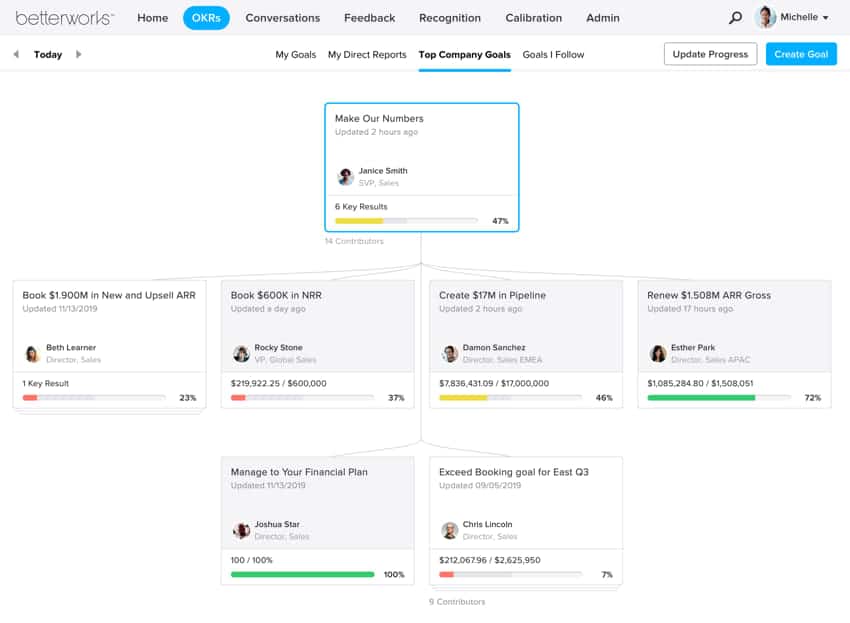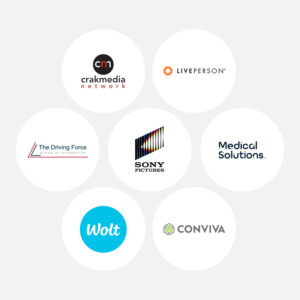Performance Enablement is the New Performance Management
Today, though, many organizations are looking to ditch the restrictions of legacy annual review processes. Contemporary performance management is agile, continuous, and integrated into the flow of work.
A better term to describe this type of process would be performance enablement. Rather than focusing on documenting past performance, performance enablement relies on frequent touchpoints to unleash each employee’s complete potential.
Shifting away from performance management to a performance enablement model requires a change in company culture.
To enable performance across an organization, everyone has to have a strategic mindset. Managers need to learn to collaboratively identify performance goals, provide frequent feedback, and maintain performance and development records to track progress over time.
Here are the essential components of contemporary performance management and enablement processes.
Understanding Performance Management
Performance enablement falls under the umbrella of performance management, but with a progressive twist.
The more control and choice you give employees over aspects of their work lives, the more engaged they’re likely to be. And that engagement counts for a lot: High employee engagement can reduce turnover and lead to a culture of innovation.
If your company is truly looking to get the most out of its workforce, performance enablement should be an essential part of your performance management processes.

What Is the Difference Between Performance Management and Performance Enablement?
Performance management systems have made great strides since the days of the annual review process. But, even with these significant improvements, traditional performance management still has its limitations. Most notably, it puts restrictions on employees that just don’t need to be there.
Traditional performance management systems rely on goals set at the top. These goals are cascaded down to each individual employee, divided according to function and role along the way, with employees assigned specific goals to achieve every quarter. This level of organization offers benefits but also a major potential drawback: It doesn’t leave employees much room for choice or innovation.
Performance enablement empowers each employee to move business priorities forward while also reaching their full potential.
Sometimes that means taking a non-traditional approach. After all, some employees — often your high-potentials — may chafe against too much control. They want to contribute their talents, skills, and ideas in the most effective way possible, which might not be “the way it’s always been done.” Being able to set their own goals through a performance enablement process sparks their creativity and enhances their commitment to the company.
Performance enablement can fall under your larger performance management framework. But that requires you to shift your performance management system. Instead of passively receiving goals set at the top, employees need to be made aware of the business’s strategic priorities, so they can actively set their own objectives.
Implementing an OKR model can help empower performance across your company. OKRs, or objectives and key results, stem from the business strategy set at the top. But instead of concrete goals cascaded down from corporate leadership, businesses identify strategic priorities. Then they set one to three objectives that support them and identify the key results that demonstrate progress towards their objectives.
Individual contributors are handed priorities to move forward rather than hard-and-fast goals. They have the freedom to collaborate with their managers to determine how their unique skills and strengths can help drive business priorities. And as they set their own objectives, they can take on ambitious projects that move them towards their own professional development goals.
Performance enablement keeps all of your workforce’s efforts and energy concentrated on business priorities and moving in the same direction.
Latest Performance Management Resources

Why Does Performance Enablement Matter?
Performance enablement empowers you to close the loop on people, strategy, and results. With a performance enablement model, employees can look at the strategy and organizational priorities set at the top. From there, employees can collaborate with their supervisors to determine what they need to accomplish to drive the business forward. Being able to set their own objectives, based on the company’s, keeps employees laser-focused on business priorities.
Performance Enablement is Active and Aspirational
Many workers today crave flexibility and autonomy, and performance enablement grants just that. And when you give employees opportunities to work their own way, set their own objectives, and pursue projects that they’re passionate about, they reward that freedom with commitment. Since performance enablement allows employees to find their own purpose and potential within the business, employees become more engaged and invested in a future with your company.
Traditional performance management tracks whether or not employees meet their goals. But the performance enablement process looks at the bigger picture and tracks employee growth. An OKR model uses key results to measure performance and progress towards goals. Recording each employee’s small wins helps them see where they’ve come from, and that can inform where they want to go.

The Leading Way to Do Performance Ratings

The Ultimate Guide to Managing Employee Performance

The Pivotal Role of AI in Performance Management

Tackling Unconscious Bias in Performance Reviews
Enable a Successful Feedback Loop With Performance Enablement
Shifting from transactional performance management to strategic performance enablement supports workforce agility. When performance conversations happen in the flow of work, employees can anticipate and react quickly to change.
Since employees are up to speed on organizational priorities — and have already been given some control over their own work — people can make decisions without wasting valuable time waiting for approvals.
Upgrading performance management by integrating a performance enablement model supports your company’s agility in a rapidly changing world.
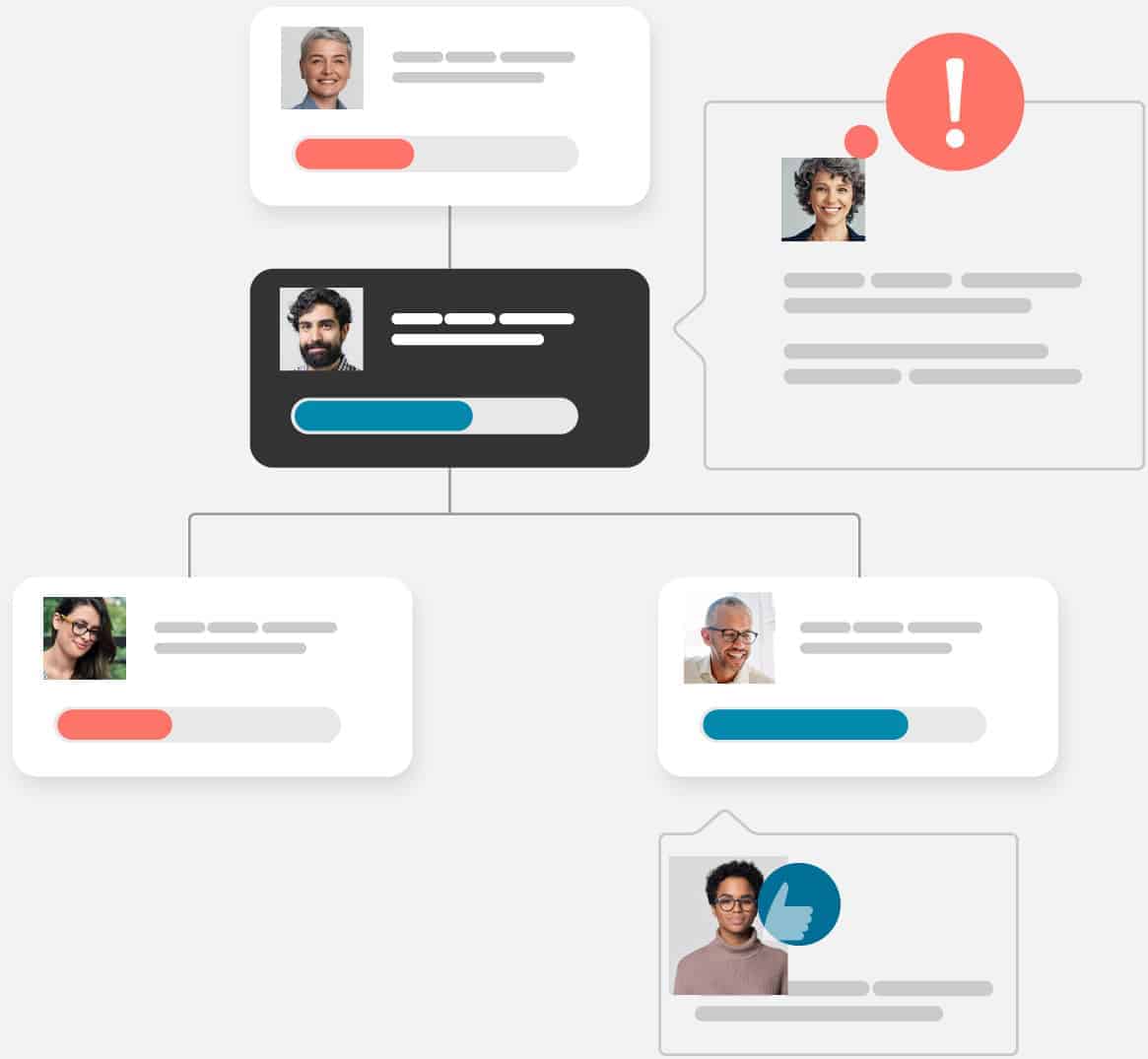
What Are the Stages of the Performance Management Cycle?
Onboarding transitions a new hire from the hiring process to their day-to-day role. Continuous performance management is crucial for setting new hires up for success. Managers should set an individual cadence with each new hire based on their individual needs.
Some employees may require daily performance check-ins for the first few weeks. Managers should be trained to walk new hires through the goal-setting process. They have to teach employees to embrace a strategic mindset.
As employees become more confident in their role, the cadence and the intent of regular check-ins shifts. Employees may need less support on their day-to-day tasks or acclimating to company norms. Instead, during the next stage of performance enablement check-ins, managers should help their reports identify their strengths and goals within the company.
As employees move further along within the company, the substance of performance check-ins becomes more sophisticated. Managers can help identify opportunities for attaining their professional goals and setting strategic objectives and key results each quarter.
The relationship between each employee and their supervisor should be strong enough that performance feedback in the flow of work doesn’t leave an employee feeling attacked or criticized. (If you’re seeking to engage and empower employees yet every check-in leaves them terrified and miserable, something is deeply wrong.)
Most likely, an employee won’t remain in the same role they started in at your company. Managers need to be trained and willing to help employees find where they can contribute the most and continue to grow with the company.

How to Adopt a Continuous Performance Management Process

A Practical Guide to Continuous Feedback at Work
What Comprises an Effective Performance Management System?
Where legacy performance management processes look backward, performance enablement looks forward. Today, an effective performance management system learns from the past to inform the present and plan for the future. Here are the components of an effective, future-oriented performance management system.
-
Defined goals.
This gives employees purpose. They have clear objectives to work towards each quarter. And the process of setting their own goals engages employees in your organizational strategy. Additionally, as managers help employees set their own goals, they learn more about what those employees want to accomplish at the company.
-
Clear communication.
Effective performance management relies on a positive relationship between employees and their managers. Trusting, transparent communication between employees and their supervisors keeps both parties aligned. Transparent communication empowers employees to address concerns or propose innovations
-
Healthy collaboration.
Employees need to feel like their voices are being heard in goal setting and performance processes, and managers should view their reports as equals working towards the same goals. With a collaborative mindset, managers become facilitators. They’re in charge of removing roadblocks so that employees can achieve their goals.
-
Appropriate recognition and rewards.
Employee recognition programs incentivize performance. Formal rewards, such as bonuses tied to high performance, are important components of an employee recognition strategy. But that shouldn’t be the extent of your recognition program. Informal recognition, such as recognizing an employee by name during a meeting, can help employees feel more appreciated and drive their sense of purpose.
-
A predictable mechanism for appraisal.
Reviews are still essential components of performance management. Some companies have opted to eliminate performance appraisals altogether, but that can leave employees with no sense of their standing in the company. Implementing informal real-time feedback and formal quarterly performance reviews can help employees both move forward and track their progress over time.
The Future of Performance Management
With performance enablement, you don’t have to separate developing employees from managing their performance. An effective performance management system hits both targets.
Customized professional development plans are an essential component of performance enablement. Incorporate stretch goals and development opportunities into day-to-day performance. For some employees, that might even mean adjusting the job description to enable them to grow in their roles.
An effective performance management software can help you keep track of these essential components of your performance management program. Identify software solutions that support intuitive data management and analytics so that HR, managers, and employees can view progress towards organizational priorities.
Performance management can be complicated. You’re engaging your employees and giving them a part in planning your company’s future, as opposed to simply assigning goals and tasks. Performance enablement offers a chance to harness a company’s full capabilities by at last enabling your people to achieve their performance potential.
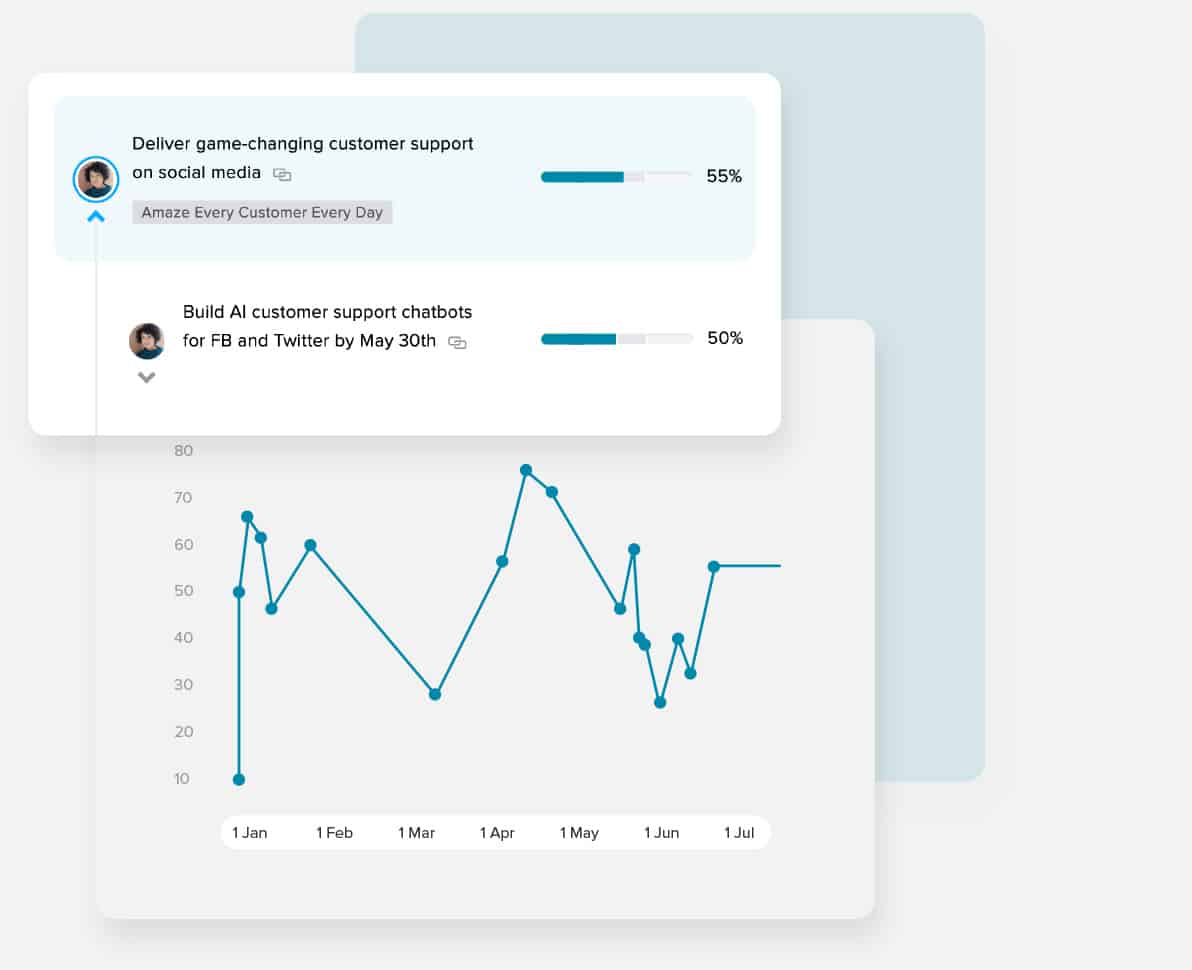
Ready to Unlock
Your Team's True Potential?
